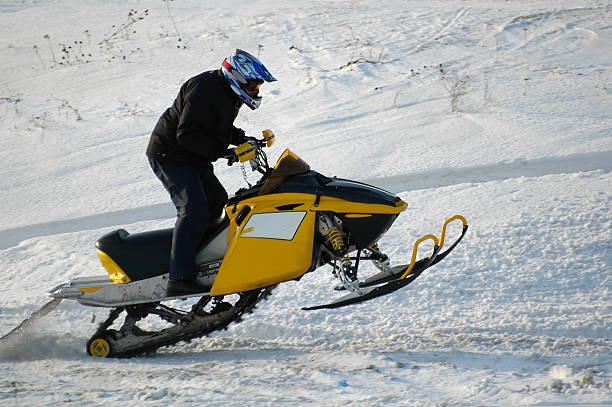Winter brings with it a magical transformation of landscapes, turning the world into a pristine wonderland adorned with a blanket of snow. For outdoor enthusiasts seeking adventure, snow sports offer a unique blend of adrenaline-pumping excitement and breathtaking beauty. Among these winter pursuits, snow riding stands out as a thrilling and invigorating experience.
Whether you’re carving through powdery slopes on a snowboard or gracefully gliding down mountains on skis, snow riding offers a remarkable way to connect with nature and push your physical limits. In this article, we will delve into the world of snow riding, exploring its history, equipment, popular disciplines, safety considerations, and the sheer joy it brings to riders worldwide.
I. A Brief History of Snow Riding (200 words)
Snow Rider has a rich and storied history that dates back thousands of years. The origins of skiing can be traced to ancient civilizations, where it was utilized as a means of transportation and hunting. Over time, skiing evolved into a recreational activity, and in the late 19th century, it gained popularity as a competitive sport.
Snowboarding, on the other hand, is a relatively recent addition to winter sports. Originating in the 1960s and 1970s, it was inspired by skateboarding and surfing. Snowboarding quickly captured the attention of thrill-seekers and emerged as a distinct discipline, eventually earning a place in the Winter Olympics.
II. The Essential Equipment (250 words)
Before venturing onto the slopes, it is crucial to equip yourself with the right gear. For skiers, the primary equipment includes skis, boots, bindings, and poles. Skis come in various types, catering to different styles of skiing such as alpine, freestyle, and cross-country. The right pair of boots and bindings provide stability and control, ensuring a comfortable ride.
Snowboarders rely on a snowboard, boots, and bindings for their exhilarating descents. Snowboards vary in length, shape, and flex, offering options for freestyle, freeride, and carving enthusiasts. Properly fitted boots and bindings are vital to maintain balance and responsiveness.
Both skiers and snowboarders need to wear appropriate clothing to stay warm and dry. Layering is essential, with moisture-wicking base layers, insulating mid-layers, and waterproof outerwear. Additionally, helmets, goggles, gloves, and protective padding play a critical role in safeguarding riders from potential injuries.
III. Popular Disciplines in Snow Riding (400 words)
Snow riding encompasses a wide range of disciplines, each with its own unique challenges and attractions. Let’s explore some of the most popular disciplines in both skiing and snowboarding.
- Alpine Skiing: Alpine skiing, also known as downhill skiing, involves navigating steep slopes at high speeds. It demands a combination of technical skill, agility, and bravery. From slalom to giant slalom and super-G to downhill, alpine skiing offers heart-pounding excitement for adrenaline junkies.
- Freestyle Skiing: Freestyle skiing focuses on creativity and acrobatics. It includes disciplines such as moguls, aerials, slopestyle, and halfpipe. Athletes showcase their versatility by performing breathtaking tricks and jumping, pushing the boundaries of what is possible on skis.
- Cross-Country Skiing: Cross-country skiing emphasizes endurance and stamina. It involves gliding across flat or undulating terrain using a skating or classic technique. This discipline offers an excellent cardiovascular workout while allowing riders to enjoy the serenity of snowy landscapes.
- Snowboarding: Snowboarding combines elements of surfing, skateboarding, and skiing, resulting in a unique riding experience. Freestyle snowboarding involves executing tricks and maneuvers in terrain parks, while freeride snowboarding allows riders to explore ungroomed slopes and backcountry areas. Additionally, snowboard cross involves high-speed racing with jumps and obstacles.
IV. Safety Considerations (300 words)
While snow riding provides exhilaration and adventure, it is essential to prioritize safety to ensure an enjoyable experience. Here are some key safety considerations:
- Proper Training: Beginners should seek lessons from certified instructors to learn correct techniques, safety protocols, and mountain etiquette. Proper training reduces the risk of accidents and helps riders progress safely.
- Protective Gear: Wearing a helmet is crucial for protecting the head from potential injuries. Goggles shield the eyes from snow, wind, and harmful UV rays, while gloves provide warmth and hand protection. Additionally, consider wearing knee and wrist guards for added safety.
- Weather Awareness: Stay informed about weather conditions and avalanche risks before heading out. Be prepared for changing weather patterns and dress accordingly. Respect any closures or warnings issued by authorities.
- Know Your Limits: Ride within your ability level and gradually progress to more challenging terrain. Pushing your limits too far can lead to accidents. Listen to your body and take breaks when needed.
Conclusion (100 words)
Snow riding offers a captivating blend of adventure, beauty, and physical exertion. Whether you prefer the elegance of skiing or the edginess of snowboarding, the thrill of descending down snowy slopes is an experience like no other. With the right equipment, proper training, and a focus on safety, snow riding can be enjoyed by enthusiasts of all ages and skill levels. So, embrace the winter wonderland, strap on your gear, and embark on a journey that combines exhilaration, skill, and a deep connection with nature. Let the snow be your playground and the slopes your canvas for endless exploration and unforgettable memories.















